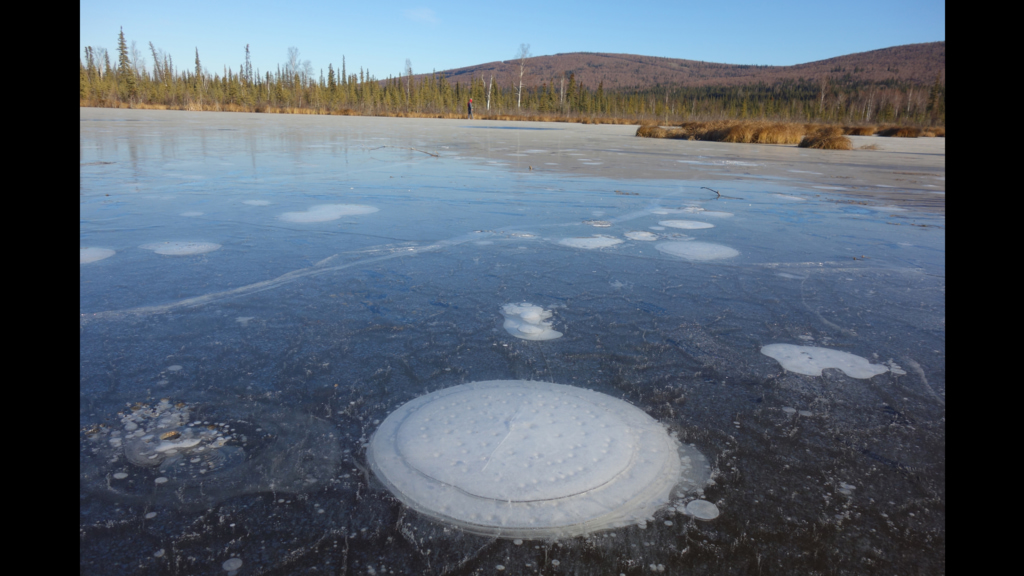Simulated Atmospheric Carbon Concentrations
Carbon exists in many forms—e.g., carbon dioxide (CO2), carbon monoxide (CO)—and continually cycles through Earth’s atmosphere, ocean, and terrestrial ecosystems. This visualization, created using data from the 7-km GEOS-5 Nature Run model, shows average column concentrations of atmospheric CO2 (colored shades) and CO (white shades underneath) from January 1, 2006 to December 31, 2006.
CO2 variations are largely controlled by fossil fuel emissions and seasonal fluxes of carbon between the atmosphere and land biosphere. For example, dark red and pink shades represent regions where CO2 concentrations are enhanced by carbon sources, mainly from human activities. During Northern Hemisphere spring and summer months, plants absorb a substantial amount of CO2 through photosynthesis, thus removing CO2 from the atmosphere. Atmospheric CO, a pollutant harmful to human health, is produced mainly from fossil fuel combustion and biomass burning. Here, high concentrations of CO (white) are mainly from fire activity in Africa, South America, and Australia. Scientists use model output data such as these to help answer important questions about Earth’s climate and to help design future satellite missions.
These model simulations use fossil fuel emissions estimates provided by the Emissions Database for Global Atmospheric Research (EDGAR). NASA’s Quick Fire Emissions Dataset (QFED) estimates fire emissions using MODIS fire radiative power observations. Additional, observationally constrained estimates of CO2 flux between the atmosphere and land and ocean carbon reservoirs were produced as part of NASA’s Carbon Monitoring System Flux Pilot Project (http://carbon.nasa.gov/cgi-bin/cms/inv_pgp.pl?pgid=581). Land biosphere fluxes come from the Carnegie-Ames-Stanford Approach Global Fire Emissions Database (CASA-GFED) model which incorporates MODIS vegetation classification and AVHRR Normalized Difference Vegetation Index (NDVI) data. Ocean fluxes are produced by the NASA Ocean Biogeochemical Model (NOBM) which incorporates MODIS chlorophyll observations.
GEOS-5 simulated average column concentrations of CO2 and CO for one year.
Credits
Please give credit for this item to:
NASA's Global Modeling and Assimilation Office
-
Animators
- William Putman (NASA/GSFC)
- Lesley Ott (NASA/GSFC)
-
Project support
- Laurence Schuler (ADNET Systems, Inc.)
- Ian Jones (ADNET Systems, Inc.)
-
Writer
- Heather Hanson (Global Science and Technology, Inc.)
Release date
This page was originally published on Monday, June 30, 2014.
This page was last updated on Tuesday, November 14, 2023 at 12:26 AM EST.

![Music: Coveted Jewels by Reuben James Cornell [PRS]Complete transcript available.](/vis/a010000/a013000/a013047/Bubbles_Still.png)